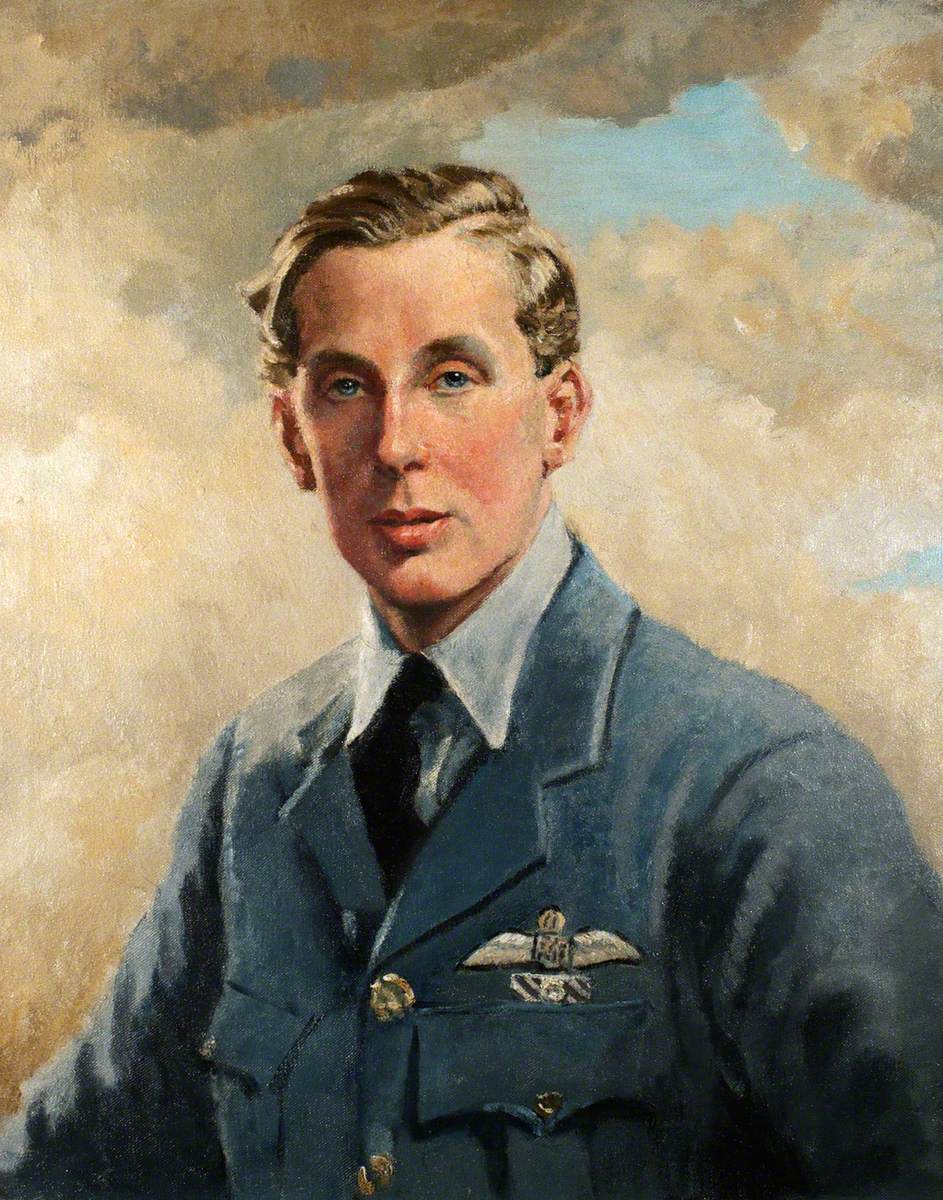
John Charles Dundas was born in August 1915, first child for Frederick and Silvia Dundas. Elizabeth, Alice, Charmian and Hugh arrived over the next few years, completing the family. Frederick was a colliery director. The family lived in Cawthorne, Yorkshire, while John and his siblings were growing up.
John was awarded a scholarship to attend Stowe School, where his brother followed him. Another scholarship took John to Christ Church, Oxford, where he gained a First in Modern History in 1936. Another award allowed him to study at the Sorbonne in Paris and Heidelberg University in Germany. He then became a journalist covering European affairs for the Yorkshire Post, taking him to Czechoslovakia in 1938 to cover the Munich Crisis, and to Rome for the visit of the British PM and Foreign Secretary to Mussolini.
While at the Yorkshire Post, John joined the Auxiliary Air Force and 609 Squadron specifically. His younger brother Hugh also joined, but 619 Squadron, although they had wished to be together in the same squadron. With war clearly about to begin, they were both called up to full-time duty in late August 1939.

In operations over Dunkirk, protecting the Allied troops awaiting evacuation, John destroyed or helped to destroy three German aircraft. Operations over Dunkirk turned into the Battle of Britain, and John continued to build his ‘score’ of enemy aircraft through the long, sunny, terrifying days of July, August, September and October 1940 when the ability to protect the UK from aerial attack and subsequent invasion seemed to teeter on a knife edge.
His award for the Distinguished Flying Cross was gazetted in October 1940.

His beloved younger brother, Hugh, kept a diary through this part of the war. Hugh became one of the youngest ever Group Captains and most skilled Spitfire pilots. In 1988, when he published his memoirs of the Second World War, he quoted sections of his diary verbatim.
Here is his entry for 1 December 1940:
It’s Sunday. On Friday I took 24 hours off to go to Wortley for a night. ‘Buck’ Casson lent me his car, as mine is still unserviceable, and I set off at about 2.30pm for Cawthorne. When I arrived at teatime I had the biggest shock of the war – of my life, I suppose. Daddy had just received a telegram that John was missing after operations on the 28th. I went to Wortley in a daze. The truth hadn’t really seeped through.
So it has happened at last. I supposed that it had to happen. I supposed that we were inordinately lucky to have survived intact as long as we did. Of course there is still hope. I tried all yesterday to phone Middle Wallop and, having at last got through, found that 609 was at Warmwell; by the time I had got through there everybody was in bed and asleep.
Poor Mummy! If John is killed – and I did my best to persuade her otherwise – I believe that even her brave heart will be broken. Now I realised what these last months have meant to her and that realisation is almost more bitter than the thought that John may be dead.
4.12.40. Thursday. Since my last entry I have been down to Warmwell. John’s CO, Michael Robinson, and all his squadron, were very kind and their sympathy was very obvious and very sincere; but they held out little hope.
In his book, Flying Start, Hugh set down what Michael Robinson described to him about John’s last sortie:
‘The squadron had been scrambled in the early afternoon of 28 November and ordered to climb to twenty-five thousand feet, south of the Isle of Wight. Robinson was leading the squadron. John’s flight made up the second six of the twelve aircraft. A formation of enemy planes was reported to be approaching from the south and 609 were directed towards them by the controller. His directions were effective. A gaggle of Me.109s was spotted by the squadron, at the same height as themselves. But before they could be engaged they turned back and contact was lost. The controller ordered 609 to orbit and as they did so they gained some altitude. A few minutes later the 109s reappeared. They, too, had gained altitude and this time they had the height advantage. Some of them curbed down to attack and Robinson ordered the squadron to break round towards them. Briefly, fleetingly, they clashed in the pale, cold, thin winter air. John’s voice called, ‘Whoopee! I’ve got a 109!’
It was the last ever heard of him.
The 109s dived away, heading back across the Channel, and Robinson told his pilots to re-form. When they had done so John’s plane was missing and he did not answer Robinson’s repeated calls.’
John’s body was never recovered, so his name was carved on CWGC’s Runnymede Memorial.

Later, details were released showing the John had shot down one Germany’s top-scoring fighter leaders, Helmuth Wieck, only to have been immediately hit himself by Wieck’s No.2. When Hugh wrote about this, over forty years later, he finished by saying, ‘It certainly contributed nothing, one way or another, to the course or outcome of the war. But it affected my life deeply. I think that hardly a day has gone by since then when I have not thought of John.’


